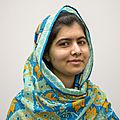Right to education facts for kids
The right to education means that every child and young person should be able to go to school and learn. It's one of the basic human rights that everyone deserves. This right suggests that all children should get a good primary education, usually starting around age three and going until age ten. After that, they should also be able to go to secondary school and even to higher education like college or university. Sadly, many children around the world still cannot go to school, especially for secondary or higher education.
This important right is written down in big international agreements. For example, it's in Article 26 of the Universal Declaration of Human Rights and Article 14 of the International Covenant on Economic, Social and Cultural Rights. It's also mentioned in other agreements like the 1960 UNESCO Convention against Discrimination in Education and the 1981 Convention on the Elimination of All Forms of Discrimination against Women. Some countries, like Belgium and the Netherlands, even have the right to education written into their own laws, called constitutions. This right is super important because it helps all children get the education they need to grow and succeed.
Contents
Why Education Matters for Everyone
Education is key for a good life. When children learn, they gain knowledge and skills. This helps them understand the world better and make good choices. Education also helps people get jobs and support themselves and their families. For a country, having educated citizens means more progress and a stronger society.
What the Right to Education Means
The right to education means a few things:
- Free primary school: Basic education should be free for all children. This way, money doesn't stop anyone from learning.
- Available secondary and higher education: Secondary schools and universities should be open to everyone who wants to learn. They should also become more affordable over time.
- No discrimination: Everyone should have the same chance to learn, no matter their gender, race, religion, or where they come from.
- Quality education: Schools should offer good teaching and learning materials. The education should help students develop fully.
- Respect for parents' choices: Parents should be able to choose the kind of education they want for their children, as long as it meets basic standards.
International Agreements Protecting Education
Many global agreements talk about the right to education. These agreements are like promises countries make to each other to protect this right.
- Universal Declaration of Human Rights (1948): This document is a big step for human rights. Article 26 says that everyone has the right to education. It also says that primary education should be free and required.
- International Covenant on Economic, Social and Cultural Rights (1966): This agreement goes deeper into the right to education. Article 14 talks about making primary education free and compulsory. It also encourages countries to make secondary and higher education available to everyone.
- UNESCO Convention against Discrimination in Education (1960): This agreement focuses on making sure no one is treated unfairly in education. It aims to stop any kind of discrimination in schools.
- European Convention on Human Rights (ECHR), Protocol 1, Article 2: This agreement, used in Europe, also protects the right to education. It says that no one should be denied the right to education.
These agreements show that countries around the world agree that education is a basic human right.
Challenges to Education Around the World
Even with these important agreements, many children still face problems getting an education.
- Poverty: Some families are too poor to send their children to school. Even if tuition is free, they might not be able to afford uniforms, books, or transport.
- Conflicts and emergencies: In places with wars or natural disasters, schools can be destroyed, and it becomes unsafe for children to attend.
- Gender inequality: In some parts of the world, girls are less likely to go to school than boys. This is unfair and stops girls from reaching their full potential.
- Lack of resources: Many schools, especially in poorer areas, don't have enough teachers, classrooms, or learning materials.
- Child labor: Some children have to work to help their families, which means they can't go to school.
Working Towards Education for All
Many groups and people are working hard to make sure every child can go to school. Organizations like UNESCO and UNICEF help countries improve their education systems. Activists like Malala Yousafzai speak out for the right to education, especially for girls. By working together, we can help make sure that the right to education becomes a reality for every child, everywhere.
Other page
Images for kids
-
Girl student in Mogadishu
-
A student teaching other students in Mogadishu
-
Malala Yousafzai, activist for female education
-
Distribution of free textbooks to children in a school in Assam
See also
 In Spanish: Derecho a la educación para niños
In Spanish: Derecho a la educación para niños









